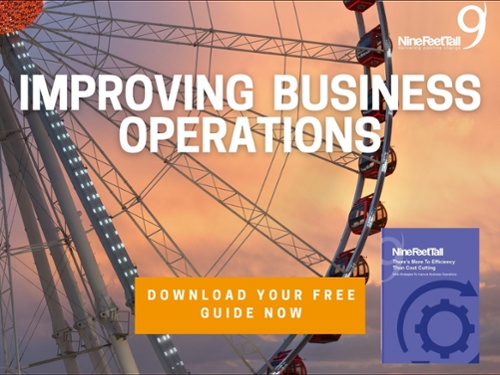Business efficiency is at the top of your Christmas list, right?! Well, a good starting point is to create a process map to understand where the naughty inefficiencies are hiding.
When it comes to creating a process map, it can take time, effort and a lot of research. Some may say it’s easy to gather colleagues, list perceived trouble areas in detail and spend time listing bullet points of aim. But making a process map that contains all the relevant information, thus creating a data-driven storyboard, can be a long and arduous process.
A process map provides a business with a structure as a tool to analyse which steps will be impacted by a change of certain outputs – traditionally, how a business can become more efficient. Nine Feet Tall recommend the following tips to help you document the most accurate process map possible:
Spend time conducting research.
Process maps are highly detailed and require a lot of information to be gathered. Make sure you do your research beforehand so the map is accurate – if a company is experiencing the breakdown of process or communication, then a well-constructed and well-researched process map can make or break the business success.
Once you’ve completed your research, answer these 9 process mapping questions:
- What are the key inputs?
- What are the main outputs?
- Where does the output go?
- What triggers the process?
- What decisions are made in the process?
- Who performs each activity?
- Who are the suppliers of the process?
- Who are the customers of the process?
- What sequence are the activities performed in?
Create a dummy-process map to work with and see where any problems or mistakes arise.
By doing this a business will be able to test run the map before implementing any changes from it, giving the company time to make any alterations (if they are required).
Be clear and focused about what the map is looking to answer. Without a clear focus, a process map can become hard to pin down and become unusable. When looking to create a process map, be very clear about what needs changing and exactly what needs to be done to make this change possible – otherwise the process map risks going wildly off-topic.
Through challenging assumptions and good facilitation, well documented processes can become invaluable. If you need more information about process mapping, download The Little Book of Business Analysis or get in touch with EstherM@NineFeetTall.com to see how we can help you redesign your processes.


